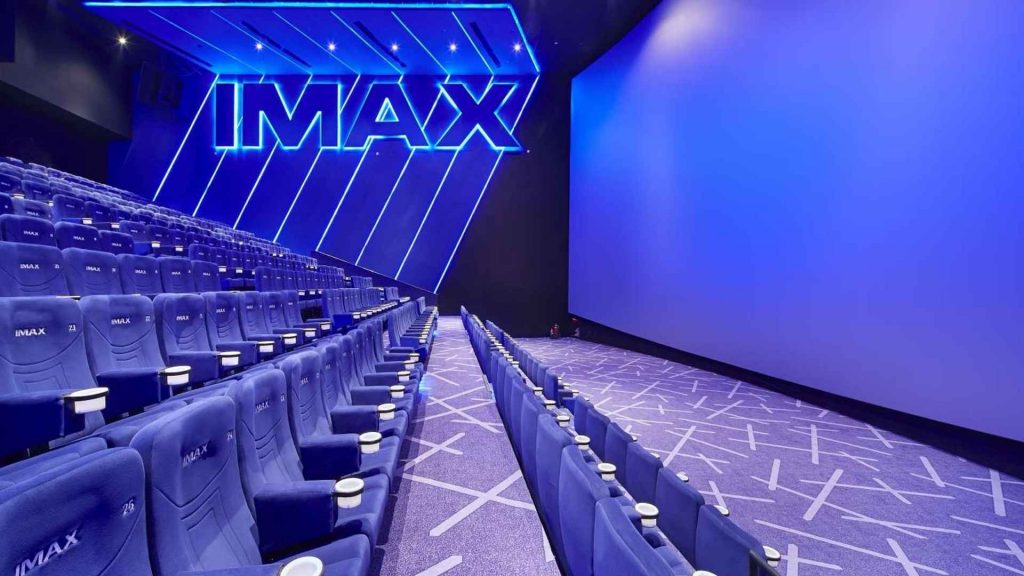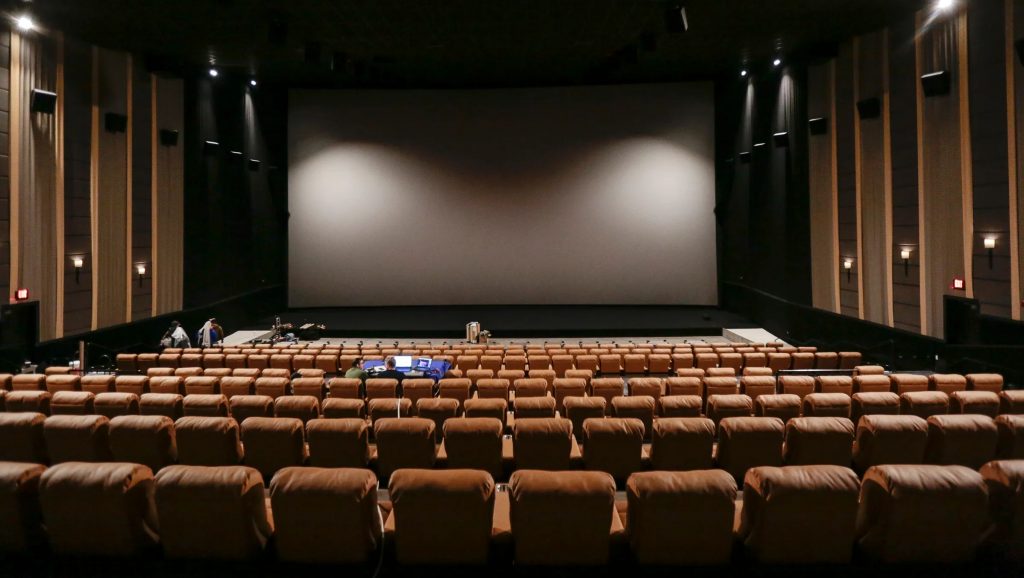If you frequently visit a movie theater to see your favorite films, you may have wondered about the average size of a movie theater screen. In addition, many types of movie theaters exist worldwide, each with its own size and quality of the film.
We shall discuss how big is a movie theater screen in this article. In this post, we will also discuss several other elements of a movie theater. Let’s get started.

How Big Is a Movie Theater Screen
Because the auditoriums in which they are shown are not all the same, standard movie screens vary in size. The bigger the auditorium, the bigger the movie screen will be. Movie screens typically measure 30 to 90 feet wide by 10 to 30 feet tall.
How Big Is a Cinema Room
The minimum projection room dimensions are minimum equipment: 3.9 x 4 m, 3.9 x 7.5 m with effects light and spotlight, 6.6 x 7.3 m for typical commercial cinema.
Types of Movie Theaters
Multiplex
The majority of movie theaters are multiplexed. A multiplex is a movie theater that shows first-run movies or the most recent releases. They have stadium seating, which allows everyone to see the screen. Films are shown on multiple screens at multiplexes.
Amenities may differ from one multiplex cinema complex to another, depending on the owner’s whims. The amenities in the different cinemas within the complex are usually standardized. Multiplexes are generally affiliated with movie theater chains like Edwards and AMC. In 1963, Stanley H. Durwood opened the first two-screen multiplex in Kansas City, Missouri.
IMAX
According to its makers, IMAX stands for Image MAXimum. Simply described, IMAX is a filming technique that uses higher image resolutions and displays more prominent graphics on a giant screen in an IMAX theater. Film crews must employ specialized IMAX technology movie cameras to film in IMAX resolutions and sizes.
IMAX cameras can film three times the potential horizontal resolution size compared to industry-standard equipment. An IMAX specialty projector is required to project the captured IMAX film onto the theater screen in an IMAX movie theater.
According to the IMAX website, IMAX technology premiered at the Fuji Pavilion at EXPO 1970 in Osaka, Japan. It was made by a group of Canadian filmmakers and entrepreneurs who intended to create a new theater system that relied on a single, powerful projector rather than several projectors.
Independent and second-run
Second-run theaters, also known as dollar movies, dollar theaters, and sub-run theaters, are movie theaters that play films for a lower price after they have left first-run theaters. Initially, they would receive 35 mm release prints after they had already been screened in first-run theaters.
As a result, the film’s quality decreased due to the release print becoming worn out from dozens of showings. The film’s prospective audience was also reduced because it had already been distributed weeks or months previously.
Drive-In
A drive-in theater is a movie theater that is open to the public and is located outside. Moviegoers drive into the theater and park in front of a giant screen that shows the film. A widescreen, a dedicated parking lot, a projection booth, and a food stand are standard features of a drive-in theater.
Most drive-in cinemas operate on the assumption that viewers will remain sitting in their cars for the film’s duration, although several offer patrons an alternative. Some even have patios and lawn seats. Others may operate their concession stand as a restaurant, with indoor seating available for those who like to eat at a table.
Read more: What Kind Of Projectors Do Movie Theaters Use?

What Is The Movie Theater Screen Made Of?
If you go to a movie theater to see a film, it will almost certainly be projected onto a screen. A cinema screen is often composed of thick white vinyl and is classified according to how much light it reflects.
There are four major categories:
- Matte White
- Pearlescent
- Silver
- Glass Bead
For a regular movie theater, pearlescent is perhaps the most popular option. A reflective coating is applied on matte white vinyl to create an iridescent or silver screen. Thousands of tiny glass marbles are placed in a clear coating on the screen’s surface in a glass bead screen.
What Is the Size of an IMAX Movie Theater Screen?
An IMAX theater is distinguished by its large rectangular screen. IMAX screens are typically 16 meters tall by 22 meters wide (52 by 72 feet), but they can be much larger. The most elevated IMAX screen stands at 30 meters (98 feet).
Where Can You Find the Largest Drive-In Movie Screen?
The largest outdoor movie theater in the world is the Wilderness Outdoor Movie Theater in Trenton, Georgia. It is the home of the world’s most giant drive-in movie screens.
What Are The Several Ways That Movies Are Shown In Theaters?
Most of today’s digital films are still delivered to theaters on a hard drive. It’s a digital file in the DCP (Digital Cinema Package) format, a global standard. The file is copied from the hard drive to a server in the projection booth.
Is IMAX Better Than 4K?
It is thought that 35mm film has a digital resolution similar to 4K: 35mm IMAX film corresponds to 6K, while 70mm IMAX is similar to 12K. While some movies are scaled back to a digital or film print for release, even IMAX projection systems are limited to 4K playback.
How Big Should an Outdoor Movie Screen Be?
If your projector gets into a struggle with the sun, the sun will win. When it comes to presenting visuals, the resolution is also crucial. You probably won’t need a 4K projector for your outdoor party, no matter how much you desire one. For most screens in the 100-inch range, Full HD 1080p usually is sufficient.
What Is The US’s Largest Movie Screen?
Bengies has the largest cinema screen in the United States. It has the country’s most prominent movie theater screen, measuring 52 feet high and 120 feet wide.
Also read: How Big Is a 100 Inch Projector Screen

Conclusion
We expect that our article has shed some light on how big is a movie theater screen. We have provided you with some additional information regarding movie theaters. If you want to have the most interactive experience while seeing your favorite film, we recommend going to an IMAX theater. They have the best video and audio quality. That concludes this article.